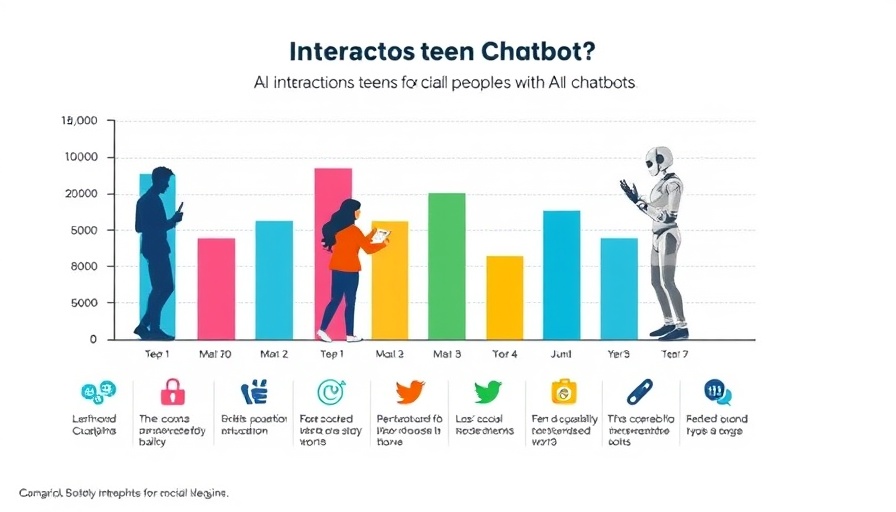
Understanding the Shift: Teens and AI Chatbots
In today's rapidly evolving digital landscape, a concerning trend has emerged. According to a recent report from Common Sense Media, an alarming 72% of U.S. teens have engaged with AI companions. This statistic is a stark indicator of how social interaction is transforming in the age of artificial intelligence. While technology often aids communication, the implications of AI chatbots as replacements for genuine human connection are sparking significant debate.
The Study in Focus: Key Findings
The study surveyed over 1,060 teens and reveals that more than half of those surveyed, around 52%, are using AI companions regularly. It’s evident that many teens are turning to AI tools not just for casual chit-chat, but as a regular part of their social lives. This raises an important question: what happens when virtual interactions begin to overshadow real-life connections?
Potential Benefits of AI Companions
While the popularity of AI chatbots may evoke skepticism, there are potential benefits worth considering. Many teens find solace in discussing sensitive topics with bots, as evidenced by the report showing 18% of users seeking advice through these platforms. This anonymity can foster an environment where young individuals feel more comfortable seeking guidance on personal matters.
The Risks: Mental Health Considerations
However, the reliance on AI tools for social interaction raises serious concerns about mental health. A significant risk associated with AI companionship is the potential detachment from real human relationships. The concern is not merely about the interactions being superficial, but about the longer-term implications, such as isolation and social anxiety.
Technological Advancements: The Future of AI Companions
As the technology behind AI bots continues to advance, it's important for business owners and educators to pay attention to how these tools are evolving. Investments in AI technology aim at making these bots more relatable and capable of engaging conversations, which could further entrench them in teenagers' social lives. Businesses should consider the implications of this technology on their target audience and adapt their strategies accordingly.
Counterarguments: The Case for Artificial Companionship
There are advocates for the use of AI companions, who argue that these tools can enrich the lives of users. Some see AI companionship as a first step towards healthier social engagement, where teens might identify their need to develop relationships offline. This duality of reliance on technology presents a unique opportunity for brands to explore how they can integrate support systems within these platforms.
Strategies for Business Owners and Educators
Given the increasing presence of AI in teenage life, business owners, educators, and mental health professionals should be proactive. They can develop initiatives that promote balanced social skills while enhancing technological literacy. Workshops that teach young people how to navigate AI tools responsibly could serve as a foundation for bridging digital interactions and real-world engagements.
Concluding Thoughts: The Importance of Balanced Engagement
The rapid adoption of AI chatbots among teens raises critical questions about the future of social interactions. Business leaders must stay informed about this trend to craft thoughtful strategies that address both the advantages and potential pitfalls of reliance on technology for social engagement. Awareness and adaptability will be key for those aiming to connect meaningfully with their audience today.
As we embrace progress, let us be vigilant about the mental health implications of these innovations. Understanding the balance between technology and human connection is crucial for fostering healthy relationships, both online and off. So, how will your business approach the intersection of technology and youth culture? It’s time to consider the implications seriously.
 Add Row
Add Row  Add
Add 




Write A Comment